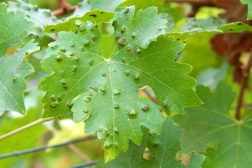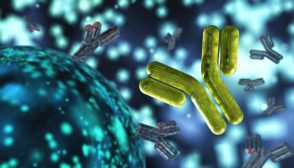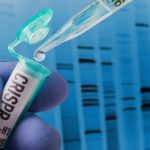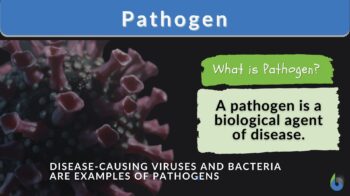
Pathogen
n., plural: pathogens
[ˈpæθ ə dʒən]
Definition: An agent causing disease or illness to its host, such as an organism or infectious particle capable of producing a disease in another organism.
Table of Contents
What are Pathogens?
Pathogens are defined as microscopic organisms, including viruses, bacteria, fungi, and parasites that can cause diseases in humans, animals, and plants. These invisible agents can cause a wide range of infections, from mild illnesses like the common cold to severe and potentially life-threatening diseases like COVID-19, Ebola, and HIV. They are also referred to as infectious agents or germs.
You might have heard the term opportunistic pathogens. Essentially, they are potential agents of disease under certain circumstances such as when the host is immunocompromised or when there’s an “opportunity”. Normally, they wouldn’t cause disease on individuals with a healthy immune system or when there’s no “opportunity”. An example is Staphylococcus aureus, which is part of the normal flora colonizing the human skin, nose, and other body parts. Most of the time, it will bring no harm but can become infectious or cause disease when it gains entry through an open wound. Conversely, the term frank (true) pathogens pertains to infectious agents that always cause disease to their host — whether the host is healthy or immunocompromised.
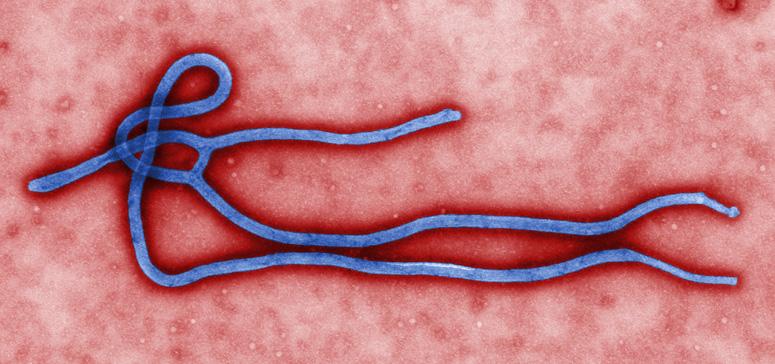
Despite being small in size, pathogens have a significant impact on human health and wellbeing, with millions of people affected by infectious diseases each year. Pathogens can be transmitted through various means, such as direct contact with infected individuals, through contaminated food and water, and through the air.
While the concept of pathogens has been around for centuries, it was not until the development of modern microbiology that their existence and role in causing diseases became better understood. With the rise of antibiotic resistance and emerging infectious diseases, the study of pathogens has become increasingly important in modern medicine and public health. The excessive and inappropriate use of antibiotics, as reported by the World Health Organization (WHO) is alarming.
Understanding the biology and behavior of these agents is critical to the prevention and treatment of infectious diseases, as well as to the development of new therapies and vaccines for eradication of these pathogens in the wild populations.
While the topic will emphasize on the different pathogens, let’s remind you that there are a number of healthy microorganisms like the gut bacteria (harmless bacteria) which play crucial roles for human health. Hence, not all microorganisms are considered to be pathogenic. Additionally, the harmful ones are also categorized as pathogenic only when they have reached a population size which is big enough to lead to diseases.
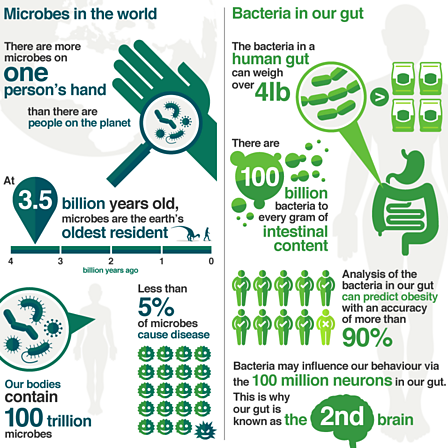
Pathogen Etymology
The word pathogen is derived from two Greek words: first one being an ancient Greek word “pathos” meaning ‘disease’ and the second French word “gene” meaning ‘producer or agent of something’. The second word is further derived from an older Greek word “genes”.
Watch this vid about pathogens:
A pathogen is a biological entity that possesses the ability to cause disease by invading and replicating within the host organism, utilizing various mechanisms to evade or subvert the host’s immune response. The dynamic relationship between pathogens and their hosts is usually guided by co-evolution with a complex interplay between the pathogen and the host’s immune system. Examples of pathogens are Mycobacterium tuberculosis (causing tuberculosis), Streptococcus penumoniae (causing pneumonia), Shigella, Campylobacter, Salmonella (causing foodborne illnesses), viruses causing smallpox, influenza, mumps, measles, chickenpox and rubella.
Related forms: pathogenic (adjective), pathogenesis (noun).
Synonym: infectious agent; germ
Variant: pathogene
Introducing the terminology “pathogen” to a young audience
Pathogens are tiny living things like viruses, bacteria, fungi, and parasites that can make you sick by getting into your body and making copies of themselves. They can be sneaky and use tricks to avoid your body’s defenses. Pathogens and our bodies are like players in a game, constantly trying to outsmart each other. It’s like they evolve together in a complex dance, with the pathogen trying to cause harm and the body trying to fight back.
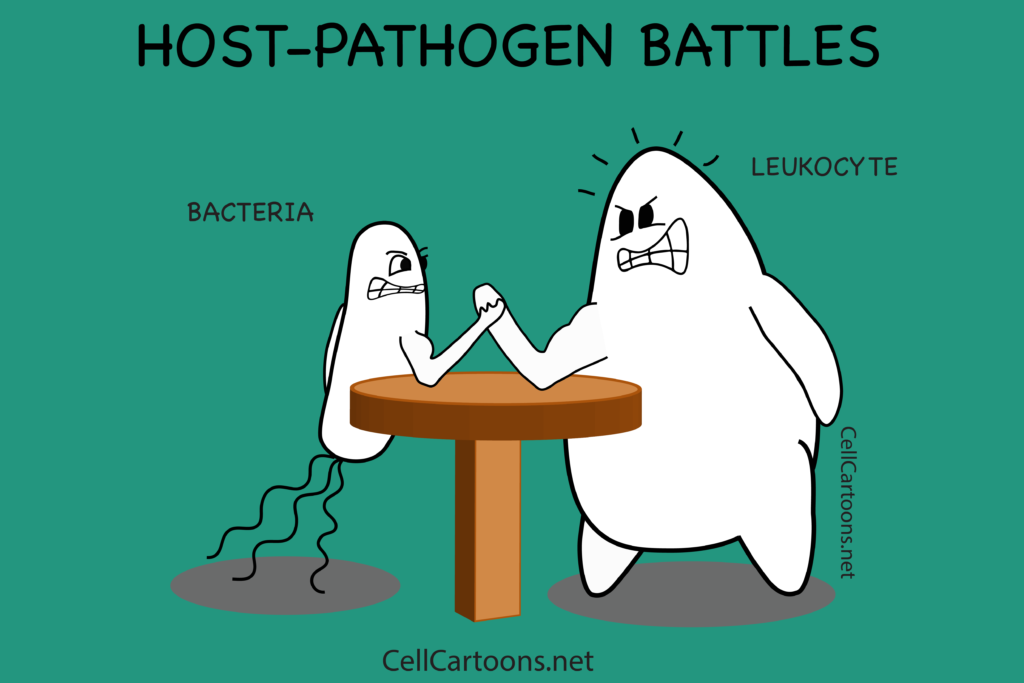
Some Interesting Facts to Note
» Idea of Macroscopic Pathogens: A macroscopic pathogen is a type of pathogen that can be seen with the naked eye. Unlike most pathogens that are microscopic and enter human cells, macroscopic pathogens are large enough to be visible to humans without the aid of a microscope.
Examples of macroscopic pathogens include certain pathogenic fungi, such as mushrooms and mold, and some parasitic worms, such as tapeworms and roundworms (infect the gastrointestinal tract). These macroscopic pathogens can cause a range of illnesses in humans and animals, including skin infections, food poisoning, and intestinal infections. It’s important to note that while some macroscopic pathogens may be visible, they can still be dangerous and cause serious health problems if not properly handled or treated. Therefore, it’s crucial to practice good hygiene and food safety to minimize the risk of exposure to these pathogens.

» Ideas of Microbiology and Parasitology: Microbiology is the scientific study of microscopic organisms (microbial diversity), which includes not only non-pathogenic but also pathogenic organisms such as bacteria, viruses, and fungi. Parasitology, on the other hand, is a branch of biology that focuses specifically on the study of parasites and their relationship with their hosts. This field examines the biology, ecology, and evolution of parasites and the mechanisms they use to survive and reproduce within their hosts.

» Idea of Host-Pathogen Coevolution Theory: The underlying idea of host-pathogen coevolution suggests that the interactions between pathogens and their hosts have shaped each other’s evolution over time. As pathogens evolve to become better at infecting and surviving in their hosts, the hosts also evolve to become better at defending against these pathogens. This dynamic interplay between pathogens and hosts has been observed in various studies and has important implications for understanding infectious disease dynamics.
One example of host-pathogen coevolution is seen in the evolution of sickle cell anemia in humans, which is thought to have arisen as a result of resistance to malaria. The sickle cell gene, which causes abnormal red blood cells, also confers some resistance to malaria infection. As a result, individuals carrying the sickle cell gene are more likely to survive in regions where malaria is prevalent, leading to the persistence of this gene in the population over time.
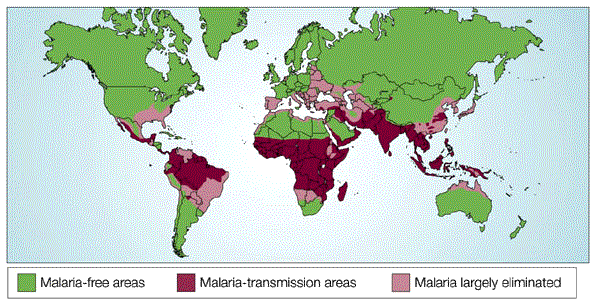
Another example is the evolution of antibiotic resistance in pathogenic bacteria. As antibiotics are used to treat bacterial infections, bacteria have evolved mechanisms to resist these drugs. This has led to the emergence of superbugs that are difficult to treat with conventional antibiotics, highlighting the importance of developing new strategies for controlling infectious diseases.
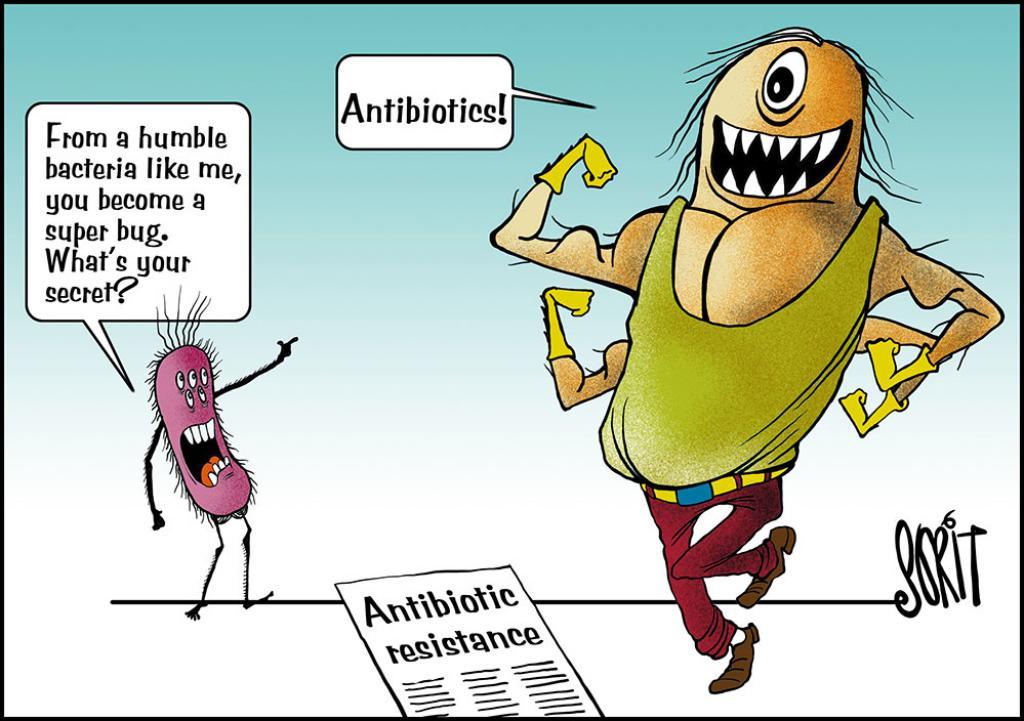
.The idea of host-pathogen coevolution highlights the dynamic interplay between pathogens and hosts in shaping each other’s evolution over time. This has important implications for understanding infectious disease dynamics and developing strategies for controlling and treating infectious diseases.
(Read more about host-pathogen and host-parasite coevolution in Biology Online’s Intermediate Host and Definitive host.)
» Idea of Episodic Time Frames of Pathogens: In the context of pathogens, episodic time frames can refer to distinct periods of pathogen outbreaks or epidemics that are separated by periods of low or no pathogen activity. These infectious diseases are caused by various factors such as changes in weather patterns, human infection, human migration, or changes in the host population.
By studying the patterns of these outbreaks and their underlying causes, scientists can gain insights into the dynamics of pathogen transmission and the factors that contribute to the emergence and spread of infectious diseases. Such knowledge helps develop effective strategies for controlling and preventing the spread of pathogens.
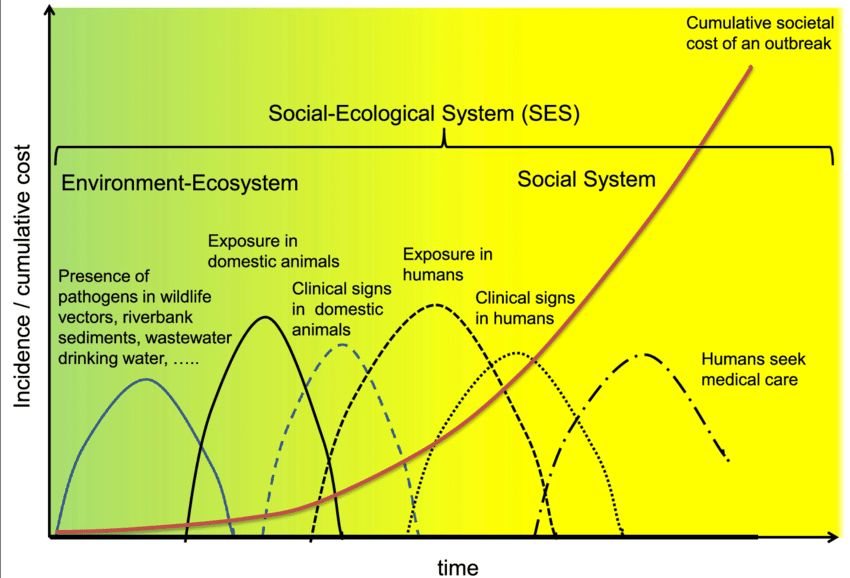
» Idea of Different Mediums of Pathogens: There are various mediums in nature where pathogens can exist and persist for varying amounts of time. Some of the most common mediums where pathogens can be found include:
Soil: Many pathogens can survive for extended periods in soil, especially if the soil is moist and has a neutral pH. Some examples include the bacterium that causes tetanus and the fungus that causes histoplasmosis. Amongst different mediums, the soil has the maximum and longest potential to hold the pathogen in a viable state.
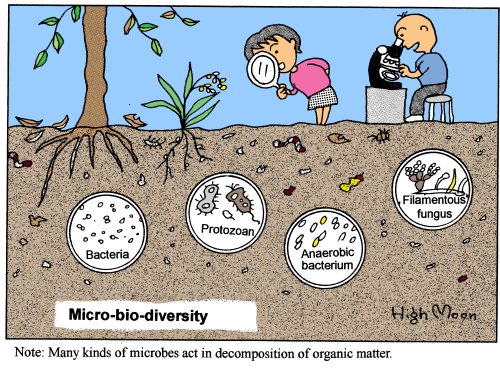
Water: Pathogens can persist in water for extended periods, especially in stagnant or slow-moving water. Some examples include the virus that causes hepatitis A and the bacterium that causes cholera.
Air: Certain pathogens can exist in the air and be transmitted through respiratory droplets. This can include viruses like the flu virus and bacteria like those that cause tuberculosis.
Surfaces: Pathogens can survive on various surfaces, such as doorknobs, countertops, and medical equipment. Some pathogens can persist on surfaces for hours or even days, increasing the risk of transmission.
Living organisms: Pathogens can also exist and persist in living organisms, including animals, plants, and humans. In some cases, these organisms can act as reservoirs for the pathogen, allowing it to persist and be transmitted to other organisms.
» Idea of Pathogenic Diseases: Pathogenic diseases are those which are caused by various types of pathogens, including bacteria, viruses, fungi, and parasites and can have significant impacts on human health. While some pathogenic diseases are well-known, such as tuberculosis, HIV/AIDS, and malaria. Some interesting pointers about them are:
- Some pathogens can remain dormant in the body for years before causing disease symptoms.
Example 1: The bacterium that causes tuberculosis can lie dormant in the body for years before becoming active and causing symptoms.

Figure 10: TB bacteria can be inactive (Latent TB) in one’s lifetime and can activate and cause disease. Image Credit: UNISON. Example 2: The virus that causes shingles can remain dormant in the nervous system for years after an initial chickenpox infection and cause a painful rash later in life. (Ref.4)

Figure 11: Latent and Reactivated Varicella–Zoster Virus that causes shingles. Image Credit: Randall J Cohrs (Ref.5). - Some pathogenic diseases can cause chronic infections that last for decades.
Example: Hepatitis B and C viruses can cause liver damage and increase the risk of liver cancer over time.
- Some pathogenic diseases can also be transmitted from animals to humans.
Example 1: The Ebola virus is believed to be transmitted to humans through contact with infected bats or primates.
Example 2: The bacteria that cause Lyme disease are transmitted to humans through the bite of infected ticks.

Figure 12: A cartoon showing how Lyme disease is caused; by infected ticks and not limes! Hahaha.. Image Credit: State of the Planet – Columbia University. - Some pathogenic diseases can be transmitted through environmental factors such as contaminated water or food.
Example 1: The bacteria that cause cholera is transmitted through contaminated water.

Figure 13: Cholera pathogens are present in water. Image Credit: Pathologists Lancet Kenya. Example 2: The parasites that cause giardiasis, which can be transmitted through contaminated food or water.
» Idea of pathogens transmitted via sexual interaction in human beings: There are several pathogens that can be transmitted through sexual interactions in humans. Some of the most common one include:
→ Human Papillomavirus (HPV): This is a common virus that can be transmitted through vaginal, anal, or oral sex. HPV can cause genital warts and may lead to cervical cancer in women.
→ Chlamydia: This is a bacterial infection that can be transmitted through vaginal, anal, or oral sex. It can cause discharge, pain, and other symptoms and can lead to serious complications if left untreated.
→ Gonorrhea: This is another bacterial infection that can be transmitted through vaginal, anal, or oral sex. It can cause discharge, pain, and other symptoms and can lead to serious complications if left untreated.
→ Herpes: This is a viral infection that can be transmitted through vaginal, anal, or oral sex. It can cause sores and other symptoms and may recur periodically over time.
→ Syphilis
→ Trichomoniasis
→ HIV/AIDS
It is important to practice safe sex and get regular STI testing to prevent and treat these infections.
Table 1: Compilation of commonly studied sexually transmitted diseases (STIs) | ||
|---|---|---|
| Sexually Transmitted Infection | Symptoms | Treatment |
| Chlamydia | No symptoms in most cases; discharge and pain during urination in some cases | Antibiotics |
| Gonorrhea | Discharge and pain during urination in men and women; pelvic pain and bleeding between periods in women | Antibiotics |
| Syphilis | Stage 1: painless sore or rash; Stage 2: flu-like symptoms and rash; Stage 3: damage to organs and nervous system | Antibiotics |
| Herpes | Blisters or sores on or around the genitals, mouth, or anus; itching and burning | Antiviral medication |
| HPV | No symptoms in most cases; genital warts or abnormal cell growth in some cases | No cure; treatment for symptoms and prevention of complications |
| HIV/AIDS | Early symptoms similar to the flu; later symptoms include weight loss, fatigue, and infections | Antiretroviral therapy |
Data Source: Akanksha Saxena of Biology Online
NOTE IT!
“Dilemma of Pathogens versus Parasites”
Parasites and pathogens are two types of microorganisms that can cause harm to their hosts. A pathogen is a microorganism that can cause disease in its host whereas a parasite is an organism that lives on or inside another organism and benefits at the host’s expense. However, they differ in their mode of transmission and the nature of the harm they cause.
Pathogens are typically transmitted from one host to another through direct contact, contaminated food and water, or airborne droplets. In contrast, parasites are often transmitted through indirect contact, such as through insect bites or contaminated soil.
While pathogens cause harm by directly attacking the host cells, parasites harm their hosts by feeding on their tissues, body fluids, or cells. This can lead to chronic infections and debilitating diseases that can last for years or even decades.
Furthermore, pathogens tend to have a rapid replication cycle and can cause acute illnesses. Parasites often have a slower replication cycle and can cause chronic infections.
Parasites can also be difficult to diagnose and treat, as they can remain hidden in the host’s tissues and evade the immune system. When a pathogen enters the body, the innate immune response is the first line of defense that responds to the infection.
Conclusively, parasites and pathogens are two types of microorganisms that can cause harm to their hosts, but they differ in their mode of transmission and the nature of the harm they cause. Understanding the differences between these two types of microorganisms can help in the development of effective treatments and prevention strategies. (Ref.1)
Table 2: Differences between pathogens and parasites | ||
|---|---|---|
| Characteristic | Pathogen | Parasite |
| Definition | Causes disease in its host | Lives on/in another organism and benefits at host’s expense |
| Type of organism | Bacteria, viruses, fungi, protozoa, etc. | Protozoa, helminths, etc. |
| Transmission | Person-to-person or environmental | Vectors, food, water, etc. |
| Relationship with host | Harmful to host, causes disease | Can be harmless, commensal or harmful |
| Reproduction | Rapid and in large numbers | Slower and complex life cycles |
| Treatment | Aimed at killing/inhibiting growth | Killing parasite or reducing number |
| Examples | Influenza virus, Streptococcus bacteria, Candida fungi | Malaria parasite, Tapeworm, Head lice |
Data Source: Akanksha Saxena of Biology Online
Pathogenicity
Understanding the intricacies of molecular biology behind pathogenicity is crucial in developing effective treatments and preventing the spread of infectious diseases. By considering both infectivity and virulence, researchers, wellness professionals and medical professionals can gain insight into how pathogens interact with their hosts and develop strategies to reduce their impact on human health.
Definitions
- Pathogenicity is the potential of a pathogen to cause disease in a host, which is influenced by both infectivity and virulence.
- Infectivity refers to the ability of a pathogen to infect hosts through direct or indirect contact, or transmission by vectors such as mosquitoes and ticks. The basic reproduction number, or R0, is used to estimate the number of subsequent cases likely to be caused by an infection.
- Virulence describes the severity of the disease and is determined by the pathogen’s ability to extract host nutrients for its survival while evading the host’s immune system by producing microbial toxins and causing immunosuppression. Optimal virulence is a balance between spreading to additional hosts for resource parasitism while keeping virulence low enough to ensure host survival for vertical transmission to offspring. Virulence factors are molecules or structures produced by pathogens, such as bacteria, viruses, fungi, or parasites, that enable them to colonize, invade, and damage the host’s tissues or organs.
Types of Pathogens
There are a variety of pathogens which are discussed below.
Algae
Algae are a diverse group of photosynthetic organisms that can be found in various aquatic environments. While some types of algae are beneficial, others can be harmful and cause disease in marine organisms. The diversity of algae pathogens and the significant impact they can have on marine ecosystems and the aquaculture industry are discussed below with examples. Effective monitoring and management strategies are necessary to minimize the impact of harmful algal blooms and prevent the spread of these pathogens.
Here are some examples of algae pathogens:
Pfiesteria piscicida: Pfiesteria is a toxic dinoflagellate that can cause fish kills and neurological problems in humans who are exposed to contaminated water. This pathogen is responsible for the death of millions of fish in the Chesapeake Bay in the 1990s. (Ref.6)
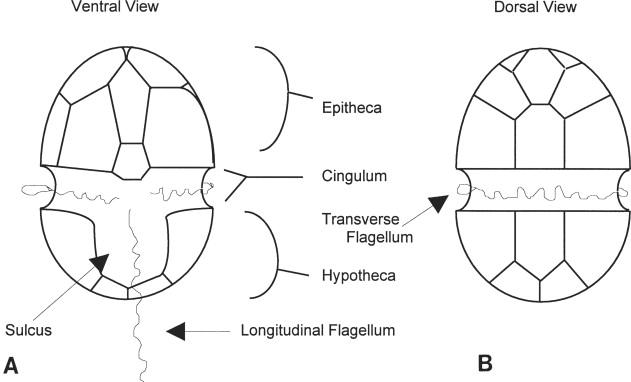
Prymnesium parvum: This species of haptophyte can cause harmful algal blooms, also known as “red tides”, that can have devastating effects on marine ecosystems. Prymnesium parvum produces a toxin that damages the gills of fish and can lead to mass mortality events.
Chrysochromulina polylepis: This coccolithophore can cause fish kills and affect the growth of shellfish, leading to significant economic losses in the aquaculture industry. Chrysochromulina polylepis produces a toxin that damages fish gills and can cause severe respiratory distress.
Heterosigma akashiwo: This raphidophyte can also cause harmful algal blooms and has been responsible for significant fish kills in aquaculture facilities in Japan and North America. Heterosigma akashiwo produces a toxin that damages fish gills, causing respiratory distress and mortality.
Bacteria
Bacterial pathogens are responsible for a wide range of human and animal diseases. These pathogens can cause illness through various mechanisms, such as producing toxins or invading host tissues. Effective prevention and control strategies, such as vaccination, proper food handling, and improved sanitation, are essential for reducing the burden of bacterial diseases on human and animal health. Some important bacterial pathogens are discussed here.
Escherichia coli: E. coli is a gram-negative bacterium that is commonly found in the intestinal tract of humans and animals. However, certain strains of E. coli, such as O157:H7, can produce a toxin that causes severe food-borne illness, including bloody diarrhea and kidney failure.
Streptococcus pyogenes: S. pyogenes, also known as group A Streptococcus, is a gram-positive bacterium that can cause a variety of infections, including strep throat, skin infections, and invasive infections such as sepsis and necrotizing fasciitis (flesh-eating disease).
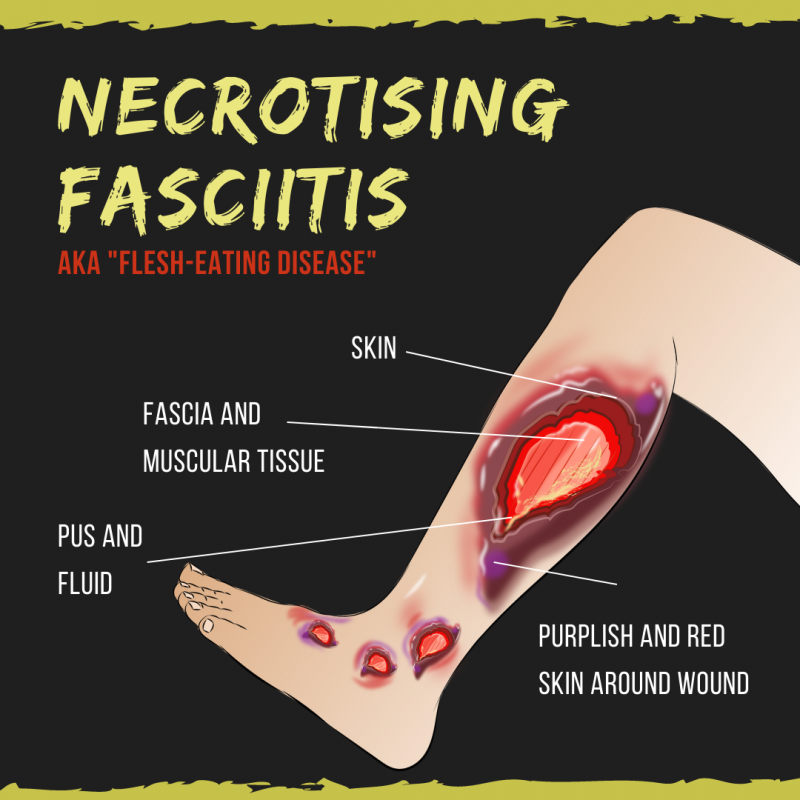
Mycobacterium tuberculosis: M. tuberculosis is a slow-growing acid-fast bacillus that causes tuberculosis, a disease that primarily affects the lungs but can also affect other parts of the body. Tuberculosis is a leading cause of death from infectious diseases worldwide.
Vibrio cholerae: V. cholerae is a gram-negative bacterium that causes cholera, a severe diarrheal disease that can lead to dehydration and death if left untreated. Cholera is typically transmitted through contaminated water or food, and outbreaks often occur in areas with poor sanitation and hygiene.
You can read more about bacteria in our comprehensive article “Bacteria”.
Fungi
Fungal pathogens are responsible for a range of fungal diseases in humans and plants. These pathogens can cause illness through various mechanisms, such as producing toxins or invading host tissues. Some important fungal pathogens are discussed below.
Candida albicans: C. albicans is a common fungal species that normally resides in the human body. However, under certain conditions, such as immune system suppression or antibiotic use, C. albicans can overgrow and cause infections, such as thrush or vaginal yeast infections.
Aspergillus fumigatus: A. fumigatus is a common mold that can cause lung infections in immunocompromised individuals, such as those with cystic fibrosis or leukemia. These infections can be life-threatening, particularly in patients with weakened immune systems.
Fusarium oxysporum: F. oxysporum is a soil-borne fungus that can cause plant diseases, such as wilt in tomato and banana plants. This pathogen can also cause opportunistic infections in humans, particularly in immunocompromised individuals.
Batrachochytrium dendrobatidis: B. dendrobatidis is a fungus that has caused significant declines in amphibian populations worldwide. This pathogen infects the skin of amphibians, interfering with their ability to regulate water and electrolyte balance. (Ref.7)
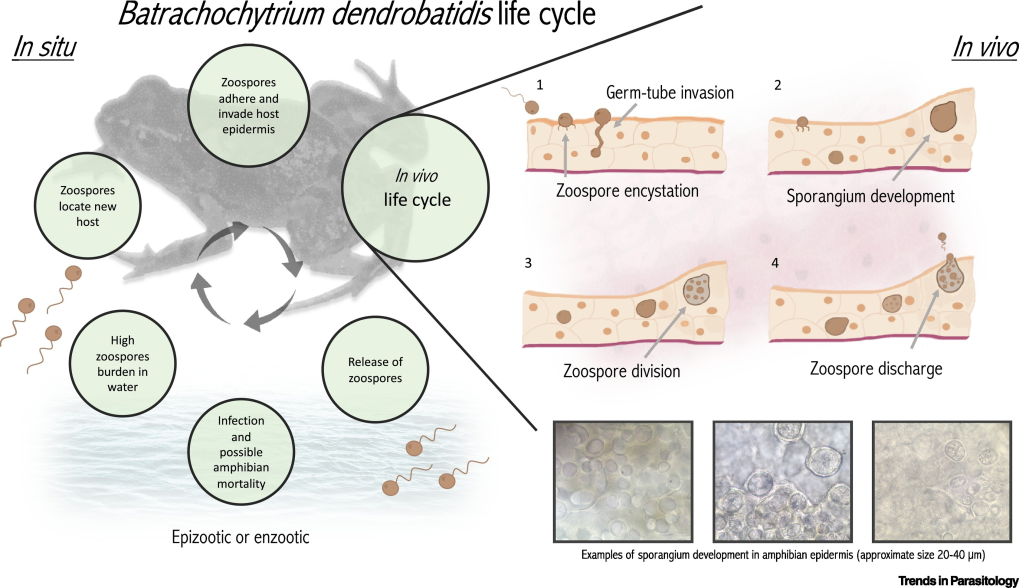
Prions
Prions are a unique type of pathogen that consist solely of protein and can cause degenerative neurological diseases in both humans and animals. Unlike other pathogens, prions do not contain any genetic material, such as DNA or RNA. Additionally, conventional sterilization methods are ineffective at destroying prions. Prions are thought to propagate by converting normal proteins into an abnormal, disease-causing form, which can form clumps in the brain leading to neurological damage and symptoms of disease. Some important examples of diseases caused by prions are discussed below.
Creutzfeldt-Jakob disease (CJD): CJD is a rare and fatal brain disorder that occurs in both sporadic and inherited forms. The symptoms of CJD include dementia, muscle stiffness, and seizures. The disease typically progresses rapidly and can lead to death within a year of onset.
Variant Creutzfeldt-Jakob disease (vCJD): vCJD is a rare form of CJD that is believed to be caused by exposure to the prion that causes bovine spongiform encephalopathy (BSE), or “mad cow disease” The symptoms of vCJD are similar to those of classic CJD, but may also include psychiatric symptoms such as depression and anxiety.

Lunatic Laboratories.
Bovine spongiform encephalopathy (BSE): BSE is a prion disease that affects cattle. The disease causes brain degeneration and can lead to severe neurological symptoms. In humans, exposure to BSE-contaminated meat products can lead to vCJD.
Chronic wasting disease (CWD): CWD is a prion disease that affects deer, elk, and moose. The disease causes neurological symptoms such as weight loss, lack of coordination, and behavioral changes. CWD is considered a serious threat to the conservation of deer and elk populations in North America.
Since prion diseases are a rare but serious group of neurological disorders that can have devastating effects on both human and animal health, continuous research efforts are needed to pace up availability of treatment options for prevention and control.
Viroids
Viroids are small, single-stranded circular RNA molecules that are infectious agents in plants. They are much simpler than viruses and do not have a protein coat. Viroids are considered plant pathogens because they cause disease in a wide variety of crops, including potatoes, tomatoes, citrus fruits, and avocados.
Viroids propagate by entering plant cells and replicating themselves using the host’s cellular machinery. This replication can lead to stunted growth, leaf yellowing, and reduced yields in affected plants. In some cases, viroids can cause complete crop failure. Viroids are highly stable and can survive in plant tissues for long periods, making them difficult to control. The development of viroid-resistant crops is an area of active research in plant pathology. Some common diseases caused by viroids in plants are listed here.
- Potato spindle tuber viroid
- Citrus exocortis viroid
- Avocado sunblotch viroid
- Tomato chlorotic dwarf viroid
- Chrysanthemum stunt viroid
- Apple scar skin viroid
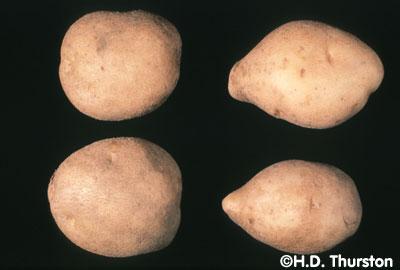
Viruses
Viruses are microscopic infectious agents that can cause disease in plants, animals, and humans. They consist of genetic material (either DNA or RNA) surrounded by a protein coat, and sometimes a lipid envelope. They cannot reproduce on their own and must infect a host cell to replicate. Examples of pathogenic viruses that cause disease include:
Tobacco mosaic virus (plant virus): This virus causes a mosaic pattern of light and dark green on the leaves of infected tobacco plants, leading to reduced growth and yields.
Rabies virus (animal virus): This virus causes a fatal disease in mammals, including humans, that affects the nervous system, leading to aggression, paralysis, and eventually death.

Influenza virus (human virus): This virus causes the flu, a respiratory illness that can range from mild to severe and can lead to hospitalization or even death, especially in vulnerable populations such as the elderly and those with underlying health conditions.
Human immunodeficiency virus (HIV): This virus attacks the immune system, leading to acquired immunodeficiency syndrome (AIDS). It is spread through contact with infected bodily fluids and can be controlled with antiretroviral therapy, but there is no cure.
Other parasites
Parasites are organisms that live in or on another organism (host) and rely on the host for their survival. They can cause disease in plants, animals, and humans. Parasites can be classified as protozoa (feed on organic tissues), helminths, or ectoparasites. Some commonly known examples of parasite pathogens that cause disease include:
Plasmodium falciparum (human parasite): This protozoan causes malaria, a life-threatening disease that is transmitted through the bite of infected female Anopheles mosquitoes.
Sarcoptes scabiei (animal parasite): This ectoparasite causes scabies, a highly contagious skin infestation in humans and animals that causes intense itching and skin rash.
Phytophthora infestans (plant parasite): This oomycete causes late blight, a disease that affects potatoes and tomatoes, leading to reduced yields and loss of crops.
Taenia saginata (human parasite): This helminth causes taeniasis, a disease that affects humans who consume undercooked beef that is contaminated with the tapeworm larvae. The infection can lead to digestive problems and weight loss.
Pathogen Hosts
As discussed in the section above, pathogen-host relationships are tightly regulated in nature. They are governed by co-evolution. Here we discuss the vast majority of hosts for various pathogens.
Bacteria
Bacteria, while being serious pathogens to humans, animals and plants can also act as hosts for pathogens, which are organisms that cause disease. These pathogens can infect bacteria and use them as a means of reproduction or as a hiding place from the host’s immune system. Listed below are some examples of pathogens that are associated with bacterial hosts.
T4 bacteriophage: This bacteriophage is one of the most studied and well-characterized phages. It infects the bacterium Escherichia coli and has a complex structure with a head and a tail.
Lambda bacteriophage: This bacteriophage infects the bacterium Escherichia coli and can integrate its genetic material into the bacterial chromosome, leading to a latent state of infection.
P1 bacteriophage: This bacteriophage infects a variety of bacterial species, including Escherichia coli and Salmonella enterica. It has a linear DNA genome and a complex capsid structure.
M13 bacteriophage: This bacteriophage infects Escherichia coli and is commonly used as a vector for DNA cloning and sequencing. It has a single-stranded DNA genome and a filamentous shape.
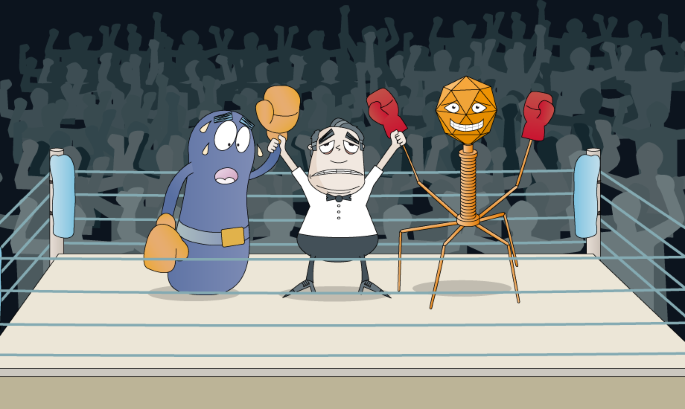
Plants
Plants and trees serve as hosts for a plethora of pathogen types- bacterial, viruses, fungal, viroids, prions, parasites, etc. These pathogens can infect plants and cause diseases that can reduce plant growth, yield, and quality. Some examples of pathogens that use plants as hosts are:
- Fusarium oxysporum (fungal)
- Potato spindle tuber viroid (viroid)
- Brome mosaic virus (virus)
- Xylella fastidiosa (bacterial)
- Tobacco mosaic virus (virus)
- Phytophthora infestans (oomycete)
- Citrus greening bacterium (bacterial)
- Plum pox virus (virus)
- Meloidogyne incognita (nematode)
- Wheat streak mosaic virus (virus)
NOTE: To date, no prion has been identified that specifically infects plants. Prions are known to infect animals, including humans, and cause diseases such as Creutzfeldt-Jakob disease (CJD) and mad cow disease.
Animals
Animals are common hosts for a variety of pathogens, including viruses, bacteria, fungi, and parasites. Some examples of pathogens that use animals as hosts include:
Rabies virus: A highly infectious virus that affects the nervous system of mammals, including humans.
Salmonella bacteria: A type of bacteria that can cause food poisoning in animals and humans.
Ringworm fungi: A group of fungi that can cause skin infections in animals and humans.
Malaria parasite: A parasite that is transmitted to humans and animals by the bite of infected mosquitoes, causing a severe and sometimes deadly disease.
Humans
Humans are hosts to a wide range of pathogens that can cause diseases and infections. Some of the most common examples of pathogens for which the human body serves as host are listed below.
- Candida albicans (Fungal)
- Ebola virus (Virus)
- Creutzfeldt-Jakob disease prion (Prion)
- Salmonella bacteria (Bacterial)
- Human immunodeficiency virus (HIV) (Virus)
- Ascaris lumbricoides (Nematode)
- Streptococcus pyogenes (Bacterial)
- Measles virus (Virus)
- Escherichia coli bacteria (Bacterial)
- Candida auris (Fungal)
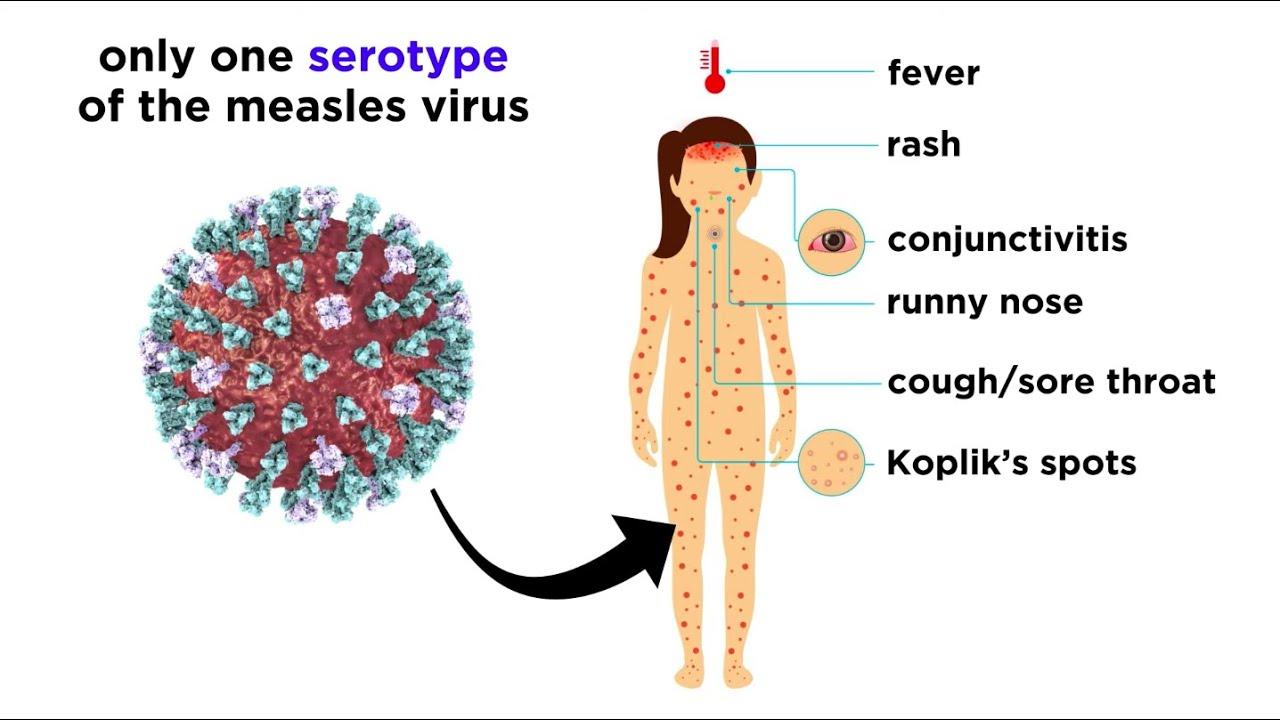
Treatment
Pathogenic diseases are a burden on human lives and the economy. Treatment options and antimicrobial therapy have widened for most diseases over the years. Yet, the ongoing research endeavors to better the prevention and control measure. There are still some pathogens that are beyond the control of human efforts and create ruckus when spread unabatedly, like the recent SARS-CoV-2 virus (and other new viruses) that brought down the world to a standstill in the Covid pandemic 2019.
Prion
Unfortunately, there are currently no effective treatments to cure prion diseases or remove prions from the body. Therefore, prevention and control are the best options. Research is ongoing to develop treatments for prion diseases, including drugs that can prevent the misfolding and aggregation of prion proteins. However, these treatments are still experimental and not yet available for clinical use.
Prevention and control measures for prion diseases are discussed below.
- Avoiding exposure to contaminated tissues or products, such as meat from infected animals, brain or spinal cord tissues, and medical instruments contaminated with prions
- Proper sterilization of surgical and medical instruments to prevent the transmission of prions between patients
- Screening of blood, tissue, and organ donations to minimize the risk of transmission through transfusions or transplants
- Implementing strict infection control measures in healthcare facilities to prevent the spread of prions
Virus
Treatment options for viral infections depend on the specific virus and the severity of the infection. Some antiviral medications can be used to treat certain viral infections, such as herpes, HIV, and hepatitis B and C. However, for many viral infections, treatment is mainly supportive, aimed at relieving symptoms and supporting the body’s immune response. Prevention and control measures for viral infections are discussed below.
- Vaccination: vaccines are available for many viral infections. The vaccine names for the treatment of virus pathogens are:
- MMR vaccine (Measles, Mumps, Rubella)
- HPV vaccine (Human Papillomavirus)
- Influenza vaccine
- Varicella vaccine (Chickenpox)
- Hepatitis B vaccine
- Polio vaccine
- Vaccination: vaccines are available for many viral infections. The vaccine names for the treatment of virus pathogens are:
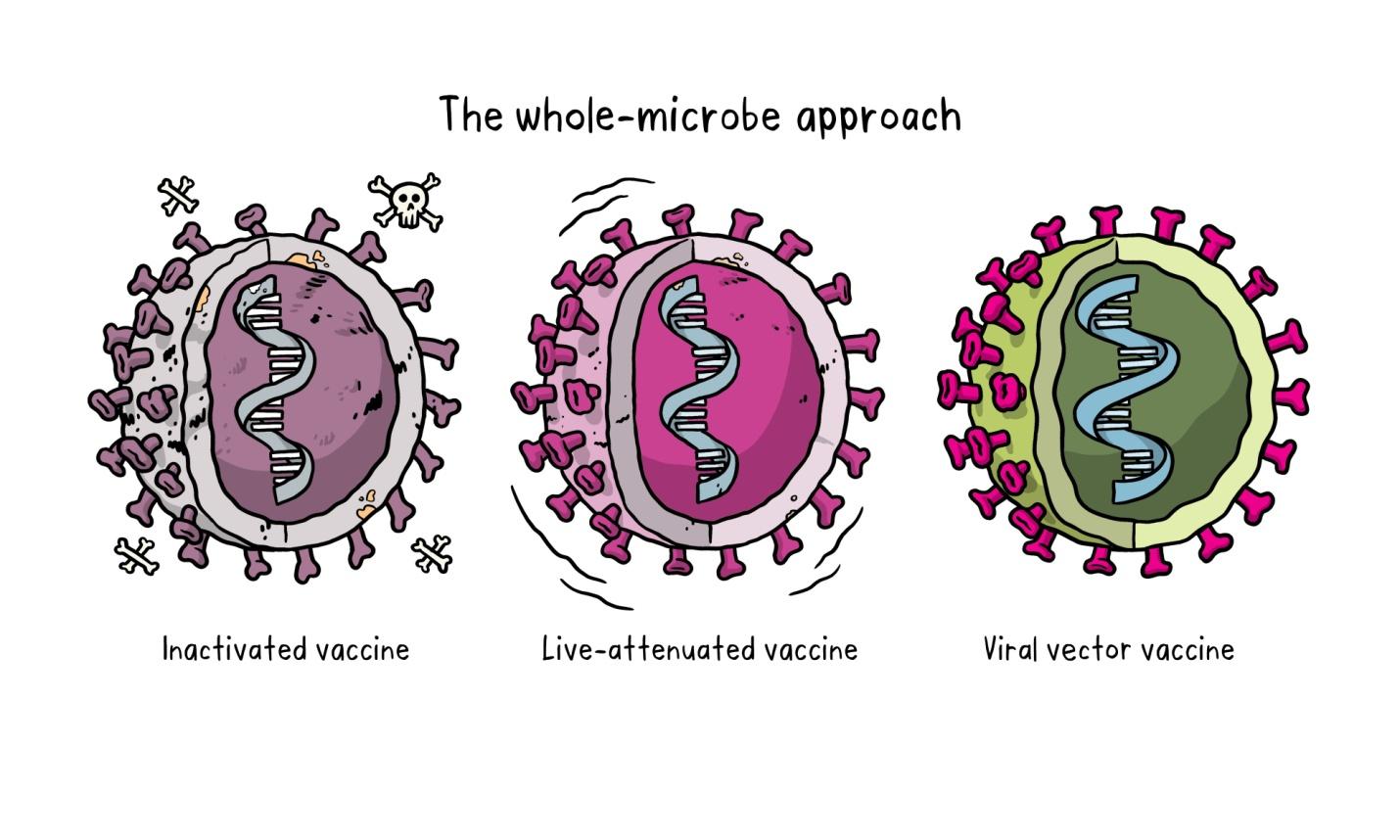
- Hygiene practices: washing hands frequently, covering mouth and nose while coughing or sneezing, and avoiding close contact with infected individuals can help prevent the spread of viral infections.
- Antiviral medications: in some cases, antiviral medications can be used to prevent viral infections, such as pre-exposure prophylaxis (PrEP) for HIV and post-exposure prophylaxis (PEP) for some viral infections.
- Quarantine and isolation: infected individuals may need to be isolated to prevent further spread of the virus, and individuals who have been exposed to the virus may need to be quarantined to prevent further transmission.
Bacteria
Treatment for bacterial pathogens usually involves the use of antibiotics. The choice of antibiotic depends on the specific bacteria causing the infection and the individual’s medical history. Prevention and control options for bacterial pathogens are discussed below.
- Good hygiene practices, such as washing hands regularly, covering the mouth and nose when coughing or sneezing, and avoiding contact with infected individuals.
- Vaccination against certain bacterial infections, such as tetanus, pertussis, and pneumococcal disease.
- Proper food preparation and storage to prevent the growth of bacteria, such as E. coli and Salmonella.
- Use of disinfectants and sanitizers to prevent the spread of bacteria in public places, hospitals, and other high-risk areas.
- Antibiotic stewardship programs to prevent the overuse of antibiotics and reduce the risk of antibiotic-resistant bacterial infections.
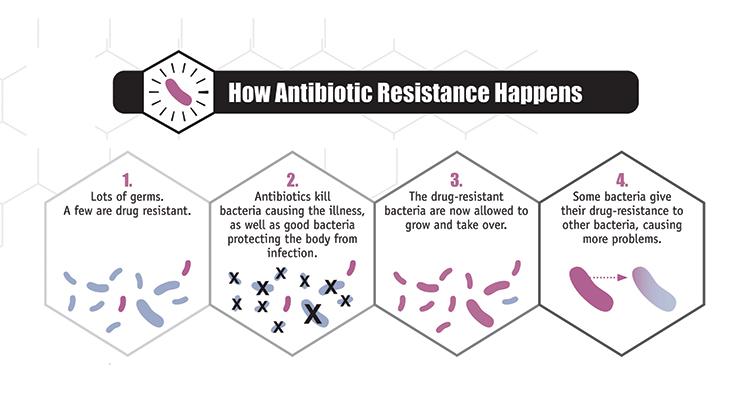
Fungi
The treatment of fungal infections usually involves the use of antifungal drugs. The specific drug used and the duration of treatment depend on the type and severity of the infection. In some cases, surgical removal of infected tissue may be necessary. Examples of some antifungal drugs are:
- Amphotericin B: It is a broad-spectrum antifungal medication that is commonly used to treat serious, systemic fungal infections.
- Fluconazole: It is an antifungal medication that is used to treat a variety of fungal infections, including those that affect the skin, nails, and mucous membranes.
- Terbinafine: It is used to treat fungal infections of the skin and nails, such as athlete’s foot, ringworm, and jock itch.
- Caspofungin: It is an antifungal medication that is used to treat invasive fungal infections, such as aspergillosis and candidemia.
- Voriconazole: It is used to treat a variety of fungal infections, including aspergillosis, candidiasis, and cryptococcosis.
- Griseofulvin: It is used to treat fungal infections of the skin, hair, and nails, such as ringworm, athlete’s foot, and jock itch.
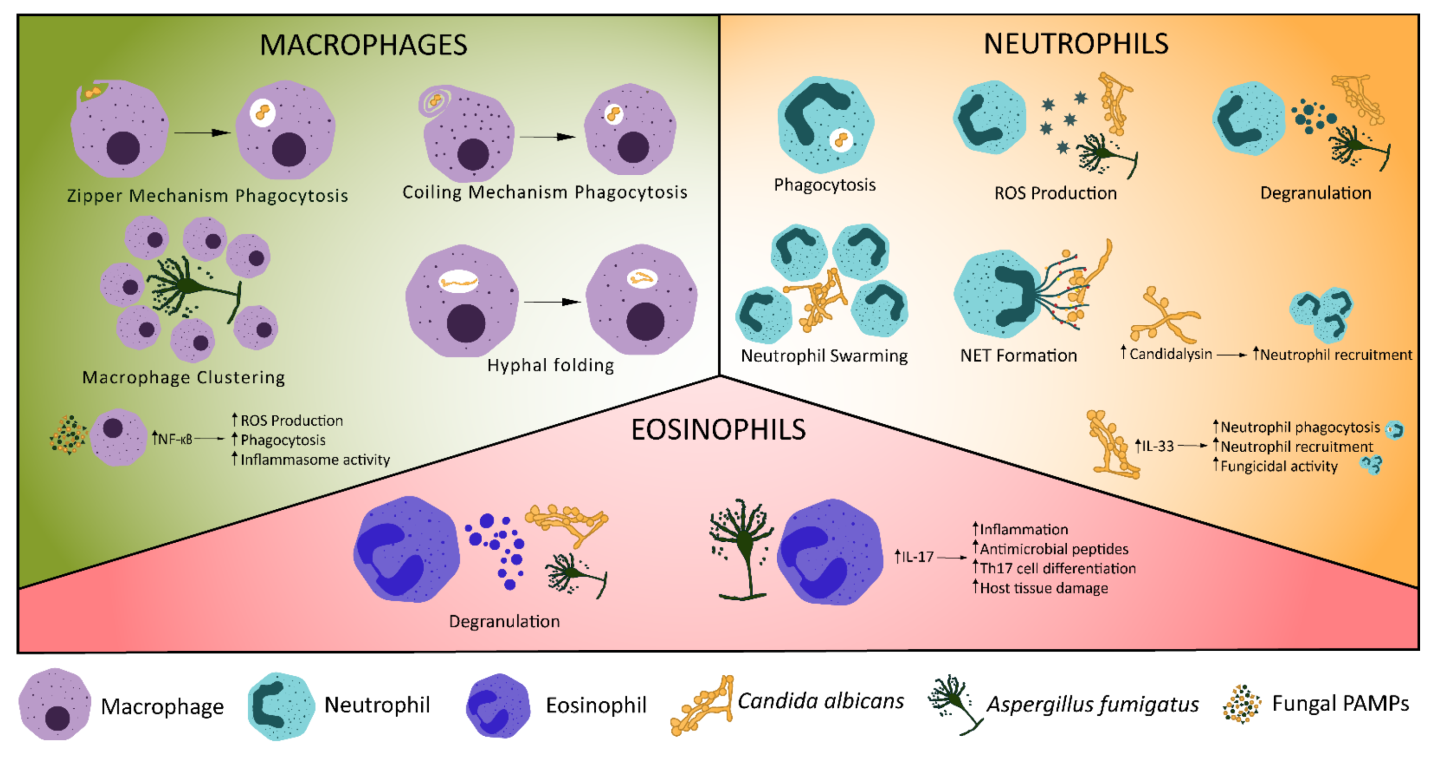
Algae
Algal pathogens that infect humans are rare, and there are currently no specific treatments for algal infections. In cases where an algal infection is suspected, treatment is usually supportive, focusing on managing the symptoms and providing care as needed.
Example: In the case of paralytic shellfish poisoning caused by certain species of harmful algae, supportive care may involve respiratory support and the administration of intravenous fluids.
Prevention and control of algal infections in humans involve avoiding exposure to the contaminated water bodies, such as lakes, rivers, and oceans that can contain harmful algae. People can also follow guidelines and advisories from local health departments and environmental agencies regarding the safety of recreational water activities, drinking water sources, and seafood consumption.
Sexual Interactions
Many pathogens have the ability to undergo sexual interaction, a process that involves genetic transformation, meiosis, and fertilization. Sexual interaction among bacteria occurs between cells of the same species through genetic transformation, where DNA from a donor cell is transferred to a recipient cell and integrated into the recipient’s genome through genetic recombination.
The bacterial pathogens Helicobacter pylori, Haemophilus influenzae, Legionella pneumophila, Neisseria gonorrhoeae, and Streptococcus pneumoniae frequently undergo this process to acquire additional traits and evade host immune cells.
Eukaryotic pathogens are capable of sexual interaction through meiosis and fertilization. Meiosis involves pairing of homologous chromosomes and recombination between them. Pathogenic eukaryotes that undergo sexual interaction include Plasmodium falciparum, Toxoplasma gondii, Trypanosoma brucei, Giardia intestinalis, and the fungi Aspergillus fumigatus, Candida albicans, and Cryptococcus neoformans.
Viruses can also undergo sexual interaction when two or more viral genomes enter the same host cell. This process involves pairing of homologous genomes and recombination between them by multiplicity reactivation. The herpes simplex virus, human immunodeficiency virus, and vaccinia virus are some of the viruses that undergo sexual interaction. These processes support repairs to genetic damage caused by environmental stressors and host immune systems.
NOTE: All information (such as dieases, symptoms, and treatments) provided is for general information and educational purposes only. It should not be used as a substitute for professional medical advice. Always consult with your physician or a qualified healthcare professional.
Take the Pathogen – Biology Quiz!
Further Reading
- “Mutualism factor” could explain why body does not attack normal flora
- The BAX® System X5 for Pathogen Detection. Simple, Accurate, Validated. (2016). Rapidmicrobiology.Com. https://www.rapidmicrobiology.com/news/the-bax-system-x5-for-pathogen-detection-simple-accurate-validated
References
- “Parasites and pathogens.” Centers for Disease Control and Prevention, 26 Aug. 2019, www.cdc.gov/ncezid/dfwed/vector-borne/factsheets/Parasites-and-Pathogens.html.
Sabeti, P. (2008) Natural selection: uncovering mechanisms of evolutionary adaptation to infectious disease. Nature Education 1(1):13
Zinsstag, J., Utzinger, J., Probst-Hensch, N., Shan, L., & Zhou, X. N. (2020). Towards integrated surveillance-response systems for the prevention of future pandemics. Infectious diseases of poverty, 9(05), 87-92.
Kennedy, P. G., Grinfeld, E., & Gow, J. W. (1998). Latent varicella-zoster virus is located predominantly in neurons in human trigeminal ganglia. Proceedings of the National Academy of Sciences of the United States of America, 95(8), 4658–4662. https://doi.org/10.1073/pnas.95.8.4658
Gilden, D. H., Kleinschmidt-DeMasters, B. K., LaGuardia, J. J., Mahalingam, R., & Cohrs, R. J. (2000). Neurologic complications of the reactivation of varicella–zoster virus. New England Journal of Medicine, 342(9), 635-645.
Grattan, L. M., Oldach, D., & Morris, J. G. (2001). Human Health Risks of Exposure to Pfiesteria piscicida: Environmental exposure to toxic Pfiesteria piscicida produces a distinct clinical syndrome in some persons; efforts to identify the toxin (s) responsible for the syndrome and to increase understanding of how it disrupts the central nervous system have important implications for public health. BioScience, 51(10), 853-857.
Sewell, T. R., Longcore, J., & Fisher, M. C. (2021). Batrachochytrium dendrobatidis. Trends in Parasitology, 37(10), 933-934.
Dart, A. Phage warriors. Nat Rev Cancer 19, 544–545 (2019). https://doi.org/10.1038/s41568-019-0203-z
Burgess TB, Condliffe AM, Elks PM. A Fun-Guide to Innate Immune Responses to Fungal Infections. Journal of Fungi. 2022; 8(8):805. https://doi.org/10.3390/jof8080805
- “Parasites and pathogens.” Centers for Disease Control and Prevention, 26 Aug. 2019, www.cdc.gov/ncezid/dfwed/vector-borne/factsheets/Parasites-and-Pathogens.html.
©BiologyOnline.com. Content provided and moderated by Biology Online Editors.





